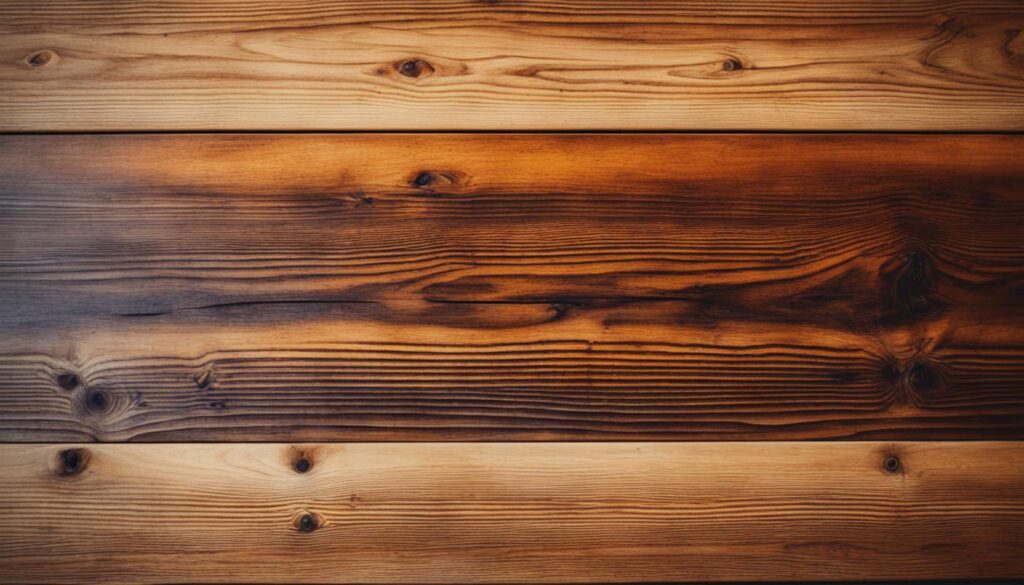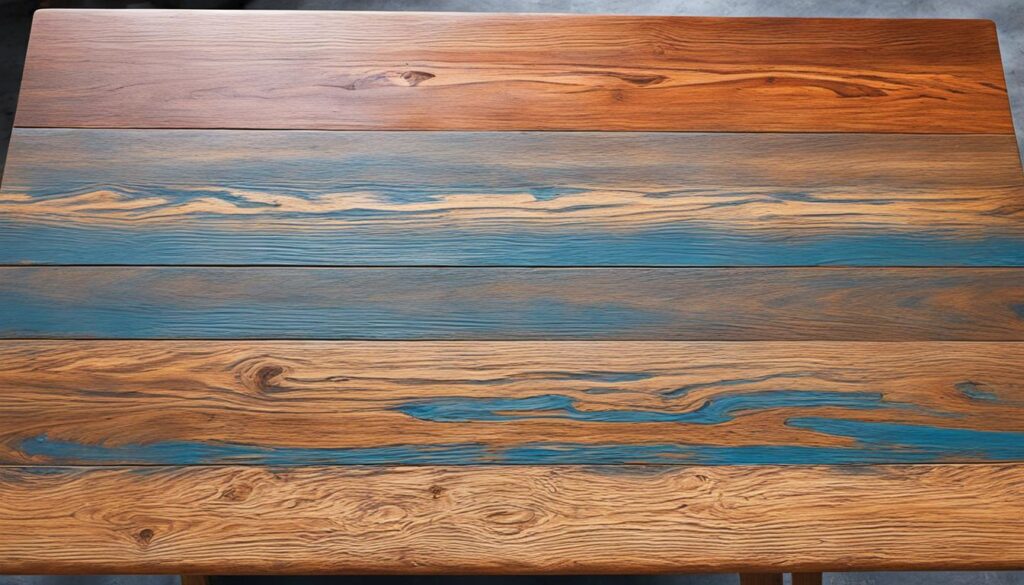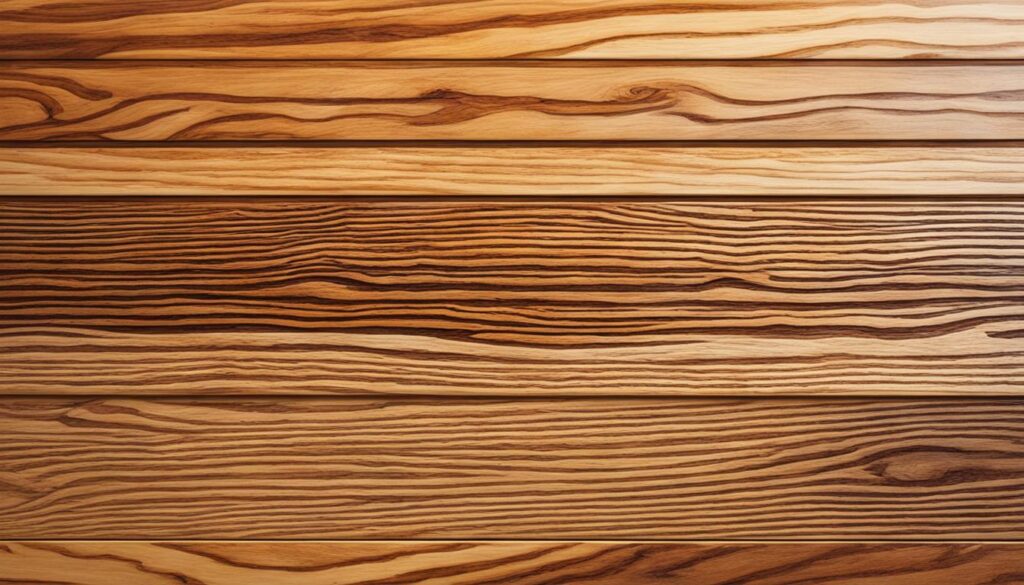Danish oil exhibits high durability due to its chemical resilience, capable of enduring temperature fluctuations, light exposure, and contamination under ideal conditions. Proper storage in a cool, dry place away from direct sunlight enhances its longevity. Environmental factors such as temperature, humidity, and UV exposure have a profound impact on its performance. The oil enhances wood hardness, providing scratch protection when applied properly. It also offers resistance to stains, essential for the wood finish's longevity. Maintenance habits play a pivotal role in extending the effectiveness of Danish oil in protecting wood surfaces. Further insights are available on Danish oil's comparative longevity to other alternatives.
Lifespan Under Ideal Conditions
Under ideal storage conditions, Danish oil exhibits a greatly extended shelf life. This longevity is attributed to its chemical resilience, which allows it to withstand degradation due to temperature fluctuations, light exposure, and contamination.
When stored in a cool, dry environment away from direct sunlight, Danish oil demonstrates its ability to resist oxidation, a process that can compromise its performance and lifespan.
Maintaining a consistent storage temperature between 10°C to 20°C and humidity below 60% further enhances Danish oil's environmental durability. This controlled environment slows down the degradation process, ensuring the oil remains stable and effective for an extended period.
Additionally, proper sealing of the container prevents air and moisture from coming into contact with the oil, thereby minimizing the risk of contamination.
Effects of Environmental Factors
How do changes in environmental conditions impact the shelf life and performance of Danish oil?
Environmental factors such as temperature, humidity, and UV exposure can have a substantial influence on the longevity of Danish oil. The Effects of Temperature, in particular, are essential to take into account, as both high and low temperatures can affect the oil's properties and performance.
Higher temperatures can cause the oil to break down faster, leading to reduced durability and potential degradation of the wooden surface it is applied to. Conversely, lower temperatures can slow down the oil's oxidation process, prolonging its lifespan.
Additionally, the Wooden Grain itself plays a vital role, as the oil's penetration and retention deepen in fine, porous grains, ensuring a longer-lasting finish.
UV exposure can also alter the oil's chemical makeup, causing discoloration and reducing its ability to protect the wood. Similarly, extreme humidity levels can affect the oil's absorption rate, compromising the integrity of the wooden surface.
Understanding these interactions is key to optimizing the use of Danish oil and ensuring a durable, long-lasting finish.
Protection Against Scratches
Scratch protection for Danish oil is essential to maintaining its durability and ensuring the longevity of the wooden surface it is applied to. When considering protection against scratches, several key factors come into play:
- Surface Hardness: Danish oil enhances the surface hardness of the wood it is applied to, providing a level of protection against scratches. The oil penetrates the wood fibers, strengthening them from within.
- Application Technique: Proper application of Danish oil is vital for scratch protection. Ensuring an even and thorough application helps create a consistent protective layer on the wood surface.
- Regular Maintenance: Periodic reapplication of Danish oil can help maintain surface hardness and consistency of the finish over time, offering continued protection against scratches.
- Protective Coatings: In high-traffic areas or for added protection, applying a clear protective coating over the Danish oil can further enhance scratch resistance, prolonging the life of the finish.
Durability Against Stains
Enhancing the wood's resistance to stains, Danish oil provides a durable protective barrier against various types of spills and discoloration. The stain resistance of Danish oil plays a crucial role in the longevity of the wood finish, making it a popular choice for those seeking a protective coating that can withstand everyday wear and tear.
To maintain the stain resistance and guarantee the longevity of Danish oil on wood surfaces, it is essential to follow some key maintenance tips. Regularly cleaning spills immediately can prevent them from seeping into the wood and causing stains.
Using coasters or placemats under glasses and hot dishes can also help prevent heat or moisture-related stains. Additionally, avoiding placing sharp or abrasive objects directly on the wood surface can prevent scratches that may compromise the stain resistance of the Danish oil.
Impact of Maintenance Habits
Maintenance habits greatly impact the overall longevity and effectiveness of Danish oil in protecting wood surfaces against stains and wear.
To guarantee the peak performance of Danish oil, the following key maintenance habits should be considered:
- Cleaning Techniques: Regularly dusting and wiping down the wood surface with a damp cloth can prevent the buildup of dirt and grime that may compromise the Danish oil's protective layer.
- Frequency of Cleaning: Establishing a consistent cleaning schedule, depending on the level of use and exposure, can help maintain the wood surface's appearance and extend the lifespan of the Danish oil.
- Application Methods: Using the right tools, such as a brush or cloth, to apply Danish oil evenly and generously ensures that the wood is adequately protected and enhances the oil's durability.
- Application Tools: Choosing high-quality brushes or lint-free cloths for applying Danish oil can result in a smoother finish and better penetration into the wood fibers, maximizing its protective properties.
Comparative Longevity to Alternatives
When evaluating the longevity of Danish oil in comparison to alternative wood finishes, it is important to consider various factors that contribute to the durability and protective properties of each product. Danish oil offers a good balance between enhancing the natural beauty of wood and providing a protective layer. Regarding durability comparison, Danish oil tends to penetrate the wood fibers, providing a long-lasting finish that can withstand regular use. It offers moderate wear resistance, making it suitable for furniture and surfaces that are subject to daily wear and tear.
Compared to alternatives such as lacquer or varnish, Danish oil typically requires more frequent reapplication to maintain its protective qualities. However, this also means that it is easier to repair and refresh when compared to harder finishes that may require complete removal before refinishing.
The maintenance requirements of Danish oil contribute to its longevity benefits, as regular upkeep can help preserve the wood and ensure the continued protection of the surface.
Welcome to WoodCraftYard.com, your one-stop destination for all things woodworking! I’m Oliver Candler, a dedicated woodworking aficionado and the creative mind behind this virtual woodworking haven. With a deep-rooted love for craftsmanship and a keen eye for detail, I am on a mission to share my passion for woodworking with fellow enthusiasts like yourself.
As a seasoned woodworker, I am committed to providing you with valuable insights, practical tips, and inspiring project ideas to help you unleash your creativity and master the art of woodworking. Whether you’re a seasoned pro or just starting out on your woodworking journey, join me as we carve, sand, and saw our way through the world of woodworking together.
Let’s embark on this woodworking adventure, where every knot, grain, and finish tells a unique story. Together, let’s craft, create, and build something truly extraordinary at WoodCraftYard.com!



